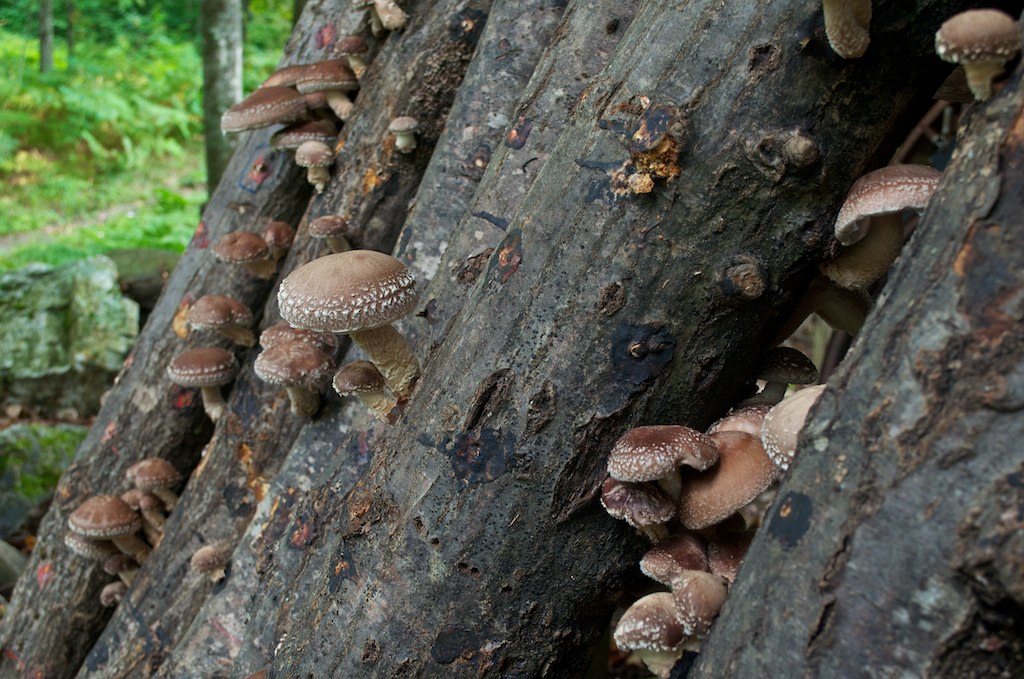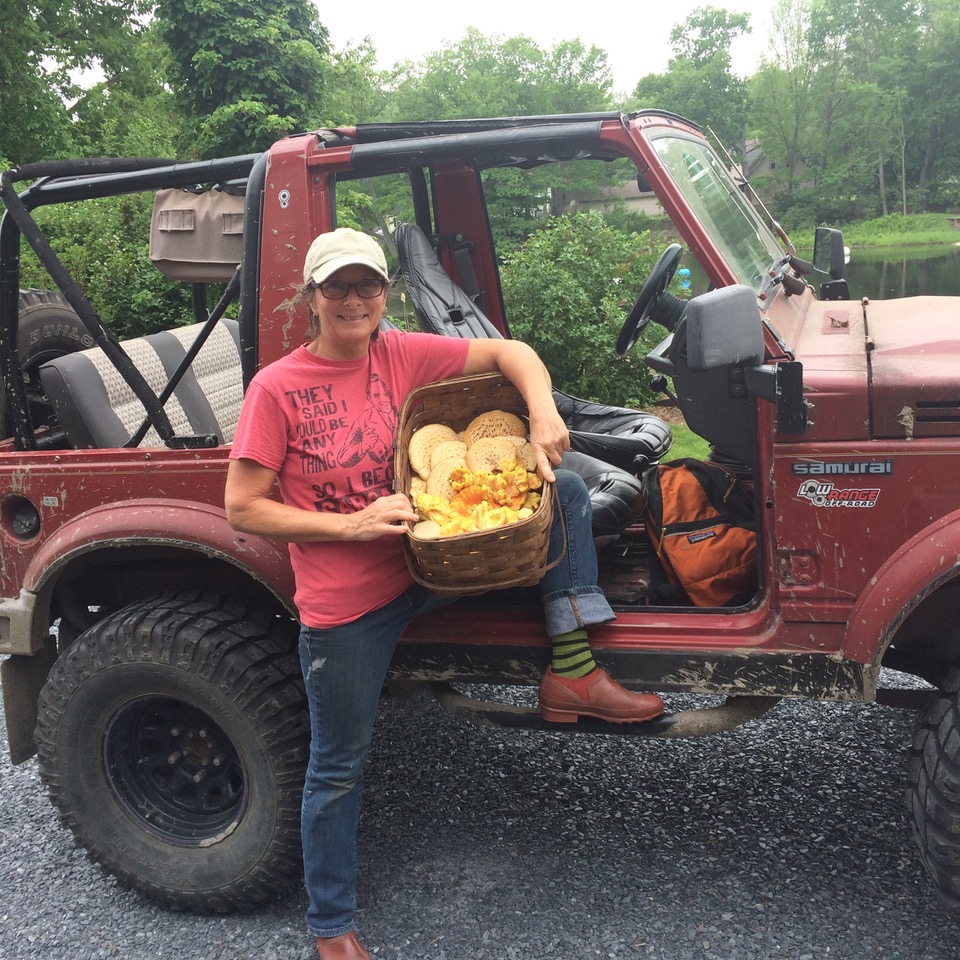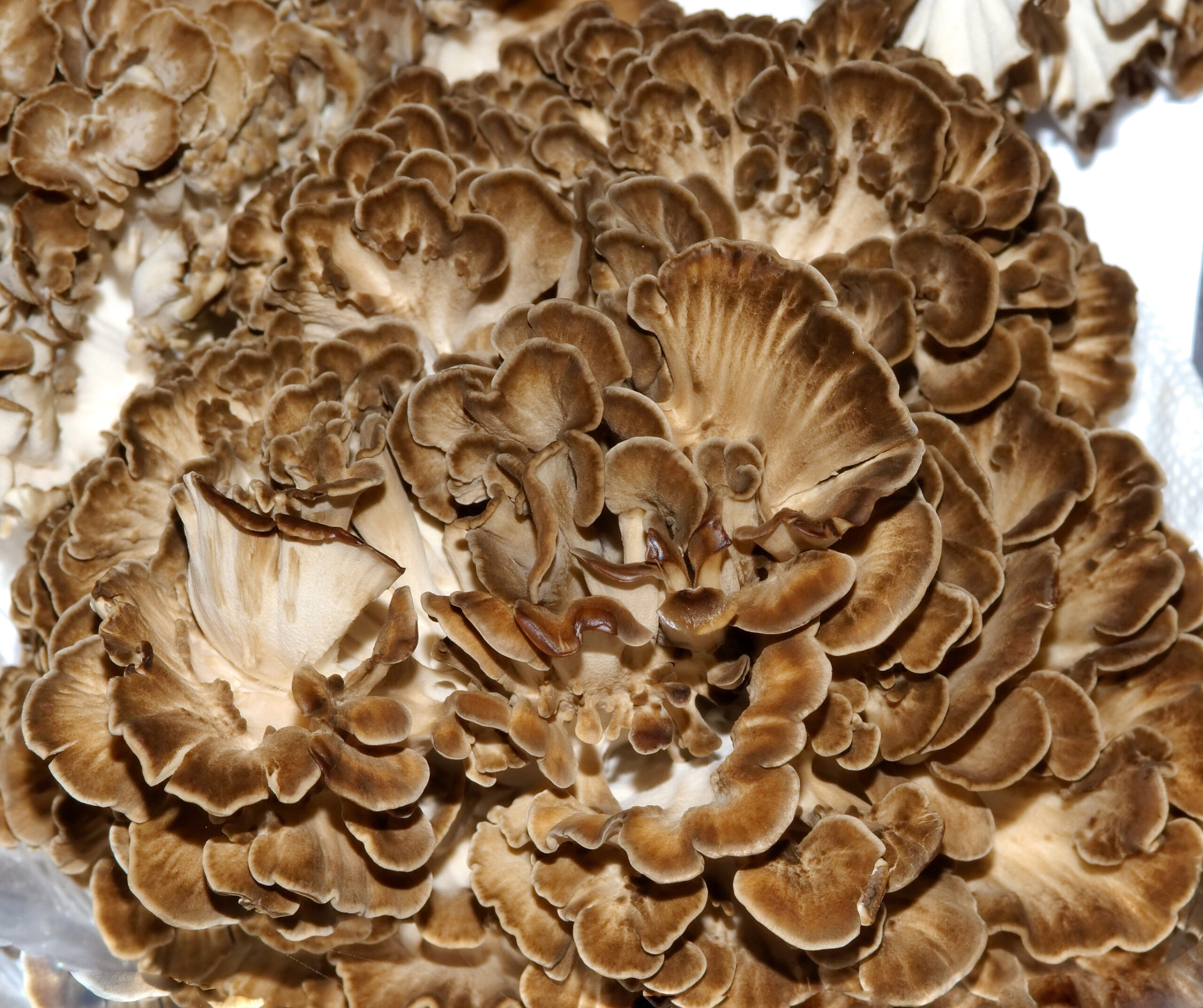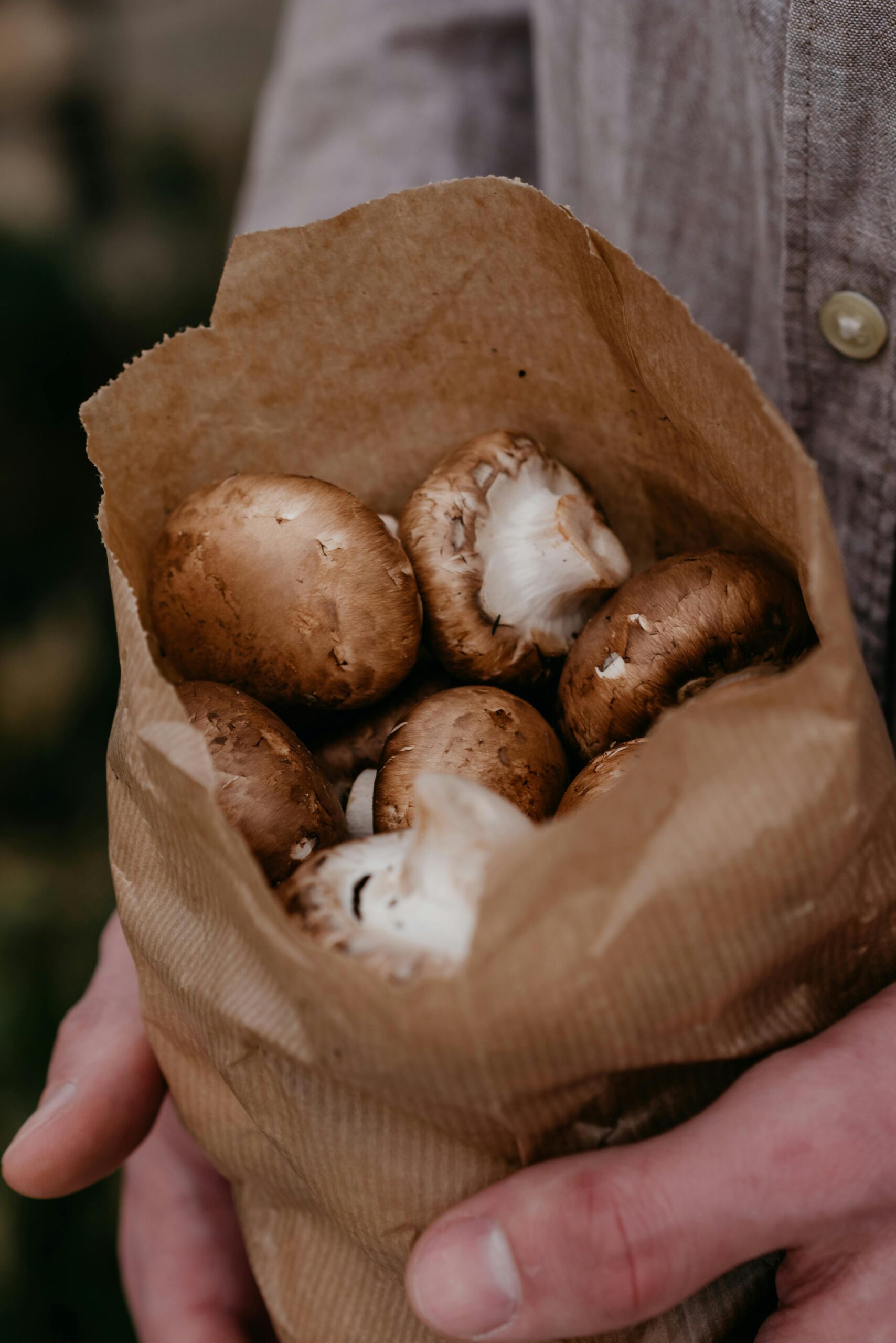Harvesting Wild Mushrooms in the Sugar River Region
Harvesting Wild Mushrooms in the Sugar River Region
Foraging for wild mushrooms in the Sugar River Region is an exciting and rewarding adventure, offering a bounty of delicious and diverse fungi such as Hen of the Woods and Chicken of the Woods. With a little knowledge and the right tools, you can harvest and enjoy these edible treasures year-round. In this guide, we’ll explore tips for identifying, cooking, and storing wild mushrooms, as well as sharing some of our favorite recipes and preservation methods to help you make the most of your mushroom haul. Whether you’re a seasoned forager or just getting started, this blog will inspire you to dive into the fascinating world of wild mushrooms in the Sugar River Region.
Mushroom Mania: Mushrooms Everywhere!
I can tell from the overheated electric cord on my Rube Goldberg coffee roaster that the breaker serving the circuit it’s plugged into will probably pop soon. We like a city++ roast, so the roasting time takes longer. The heat for my home-built machine is supplied by a red, vintage heat gun standing on end under a modified, eight-cup, stainless steel flour sifter. I welded metal paddles to the rotating sifter axle to more evenly distribute and heat the green coffee beans within the steel chamber. The paddles are turned by a 100rpm Greartisan high-torque electric motor, which works a lot better than the electric drill contraption I first tried.
She doesn’t usually pop a circuit, but I have a full load of Hen of the Woods mushrooms in the adjacent high-capacity food dehydrator running at the same time. The big old heat gun is really sucking up the current. And yes, I tell Lori, I could turn off the dehydrator while I roast the coffee, but today? Today I’m feeling lucky. And happy.
Harvesting Wild Mushrooms: A Bounty of Nature
A Ton of Fun (Gus)
Who wouldn’t feel lucky and happy if they, like us, had just harvested close to twenty pounds of choice edible wild mushrooms the afternoon before? Hen of the Woods, or maitake, are almost my favorite wild mushroom—second only to the elusive black trumpet. One of the big differences between these two fungi is the usual harvest quantity, and that’s where maitake wins big time. Often, when we find Hen of the Woods, we find a ton of it. Since we like it so much, we have learned several ways to preserve what we can’t immediately eat, share, or sell. The abundance of mushrooms in the Sugar River Region is astonishing!
Deciding What to Do with Your Mushroom Harvest
After harvesting a large patch of wild mushrooms like maitake, you have to decide what to do with it. It’s hard to pass up large patches of edible, especially choice, edible mushrooms when we find them because the mycelium fruiting stage doesn’t last long. Wild mushrooms need to be harvested soon after they appear, or they quickly reach maturity and go by. If the season has been particularly abundant, we are apt to end up with half a Suzuki Samurai full of mushrooms on an afternoon haul. It’s a problem we are always happy to have.
Cooking with Wild Mushrooms
Chicken of the Woods
Just a couple of days ago, while on her morning walk, Lori discovered a fine little flush of Chicken of the Woods on a log near the road’s edge. An old friend was visiting, so she harvested it, and we ate most of it last night in a wonderful cream sauce over brown rice. With a side salad of freshly picked garden lettuce and veggies, it was a feast. We will have more of it tonight along with a black trumpet mushroom risotto. Chicken of the Woods keeps well (up to a week) stored in a paper bag in the fridge. We will most likely dehydrate and store the rest to be added to soups and stews when the weather turns, or share it with friends.
Chicken Pot Pie
Another superb way to use freshly harvested Chicken of the Woods? Chicken pot pie! You can easily substitute this versatile mushroom for meat in a pie. Hot, or cold the next day, it is the perfect way to enjoy this favorite dish. Here is a good recipe, but don’t be afraid to use your own.
Mushroom Risotto
Here is one more way to use wild mushrooms (any of the ones I’ve mentioned in this blog) to make risotto. I love a good risotto, but not the long form of stir, stir, stir! I use an Instant Pot, which greatly reduces the cook time for this delectable dish. Whatever mushroom you use, wild or store-bought, will beautifully flavor the risotto as a fantastic side dish, or use it as the main course. You won’t be disappointed! Check out this recipe.
Storing Wild Mushrooms
Dehydrating Wild Mushrooms
What mushrooms you don’t want to, or can’t, eat fresh can be stored long-term by dehydrating them. As we became more proficient at finding mushrooms and obtained an abundance of fungi, we invested in a larger dehydrator. It’s not a commercial-grade dehydrator, but it does have a much larger capacity than our original. Once you, too, are finding a lot of mushrooms, it’s worth investing in a larger model.
The process is straightforward. After thoroughly cleaning the mushrooms, either cut or tear them into smaller pieces and dehydrate them in a suitable setting. Many mushrooms are loaded with moisture, so reaching the fully dehydrated stage can take several hours or overnight. The goal is to get them as dry as possible, a stage known as “cracker dry.” They should actually make a little snap sound when you break them in half.
If your dehydrator can’t get them that dry, you can make a secondary drying chamber. Pour a 2-inch layer of DampRid into a glass storage container or Tupperware with a good sealing lid. Then, cover that with a paper towel, and place your nearly dry dehydrated mushrooms onto the towel. The DampRid will remove any last remaining moisture from the fruit and reduce them to that cracker dry condition. After that, immediately remove them from the chamber and store them in airtight containers or bags.
Mushroom Powder and Freezing Techniques
Lori uses the dehydrated mushrooms and reduces them into a powder using our blender. Sometimes, she’ll add other dried herbs to that mixture, such as dried chives, wild ramps, etc. We can add the powder to whatever we’re cooking. Small containers of the powder make great gifts.
A second way to store mushrooms is to freeze them. Some mushrooms, such as maitake, can be frozen in their raw state. Others, such as pheasant back (also called dryad saddle) or oyster mushrooms, are best pre-cooked prior to freezing. Sauté them and then freeze them in sealed bags.
The Benefits of Wild Mushrooms
Many mushrooms are not only delicious and nutritious but are also loaded with medicinal properties. In another blog, I will spend some time talking about which ones can be used for that purpose and how the process works. Lori knows a lot about this and has made many healthy, medicinal tinctures and elixirs from not only mushrooms but berries as well.
Exploring wild mushrooms in the Sugar River Region is a rewarding experience for any forager. With a little know-how, these fungi can provide delicious meals and healthy ingredients for months to come. Whether you’re cooking a creamy risotto or crafting a unique chicken pot pie, the flavors of wild mushrooms are sure to elevate your culinary creations. Happy foraging!
Written by Ed Corely on September 20, 2024.



